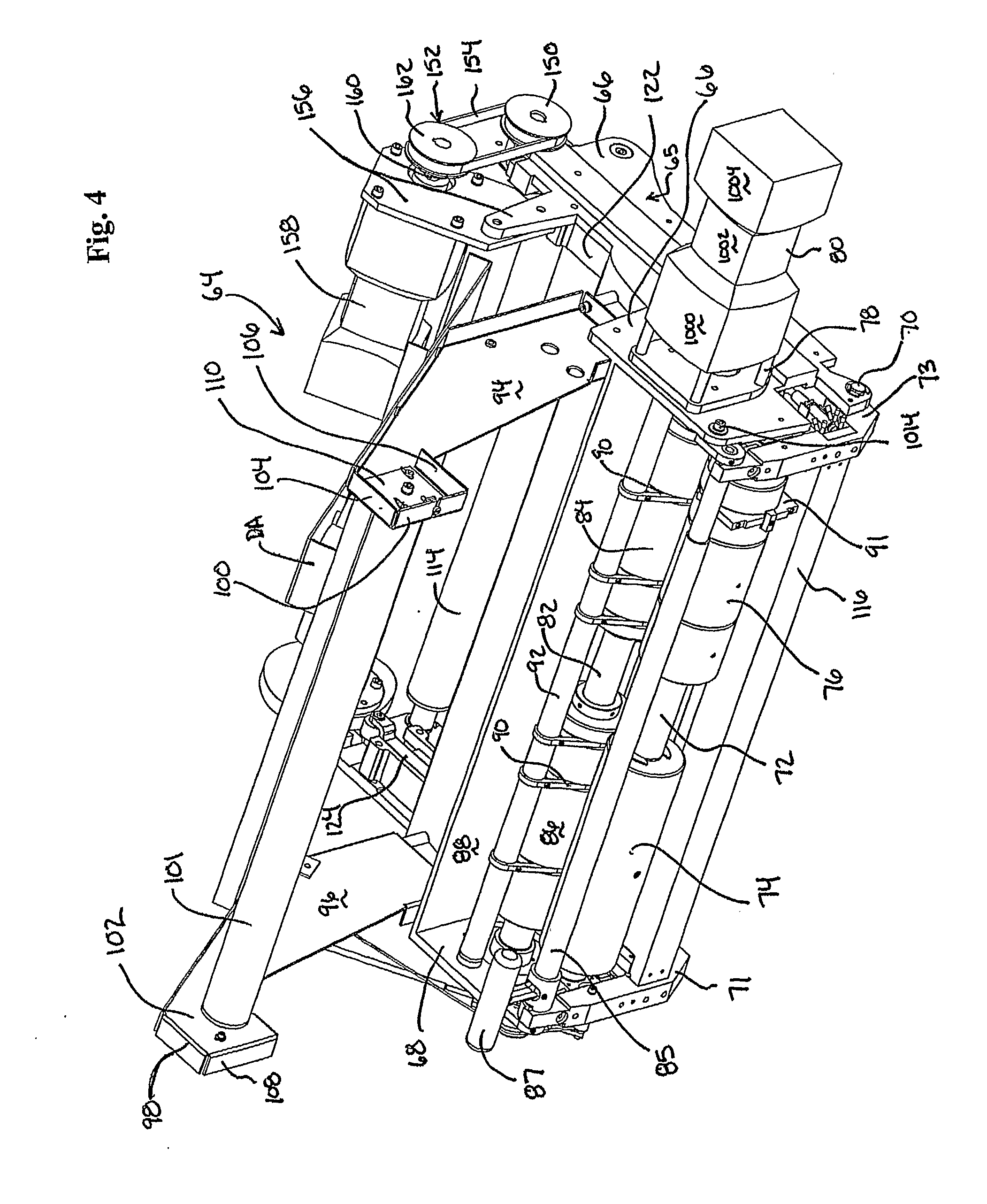Dispensing system with material spill prevention system
a technology of material spill prevention and dispensing system, which is applied in the direction of liquid materials, packaging goods, transportation and packaging, etc., can solve the problems of increasing the level of foam spill, problematic foam-up, and high cost for users, and achieve the effect of improving position monitoring
- Summary
- Abstract
- Description
- Claims
- Application Information
AI Technical Summary
Benefits of technology
Problems solved by technology
Method used
Image
Examples
first embodiment
[0122]FIGS. 7 and 18 to 22 illustrate material spill avoiding dispensing system 1000 shown as comprising foam-in-bag dispensing system 20 with FIB assembly 64 and material spill prevention system 3000. Spill prevention system 3000 is particularly useful in systems such as the above described “FIB” dispensing system where there might be a highly disruptive foam-up situation (since typical foams are fast adhering, difficult to remove once set, and, due to their expansion, expand throughout the various nooks and crannies of the system), although any spill of material whether adhering or not is undesirable. In a preferred embodiment, wherein material spill prevention system 3000 is used in conjunction with a foam-in-bag dispensing system 20 to provide material spill avoiding dispensing system 1000 (only partially shown in FIGS. 7, 18 and 19), spill prevention system 3000 preferably comprises one or more sensors as in the left and right sensors 3100 and 3102 shown in FIGS. 18-21. Sensors...
second embodiment
[0156]the present invention features material spill prevention system 3000A (FIG. 26). To better appreciate features of material spill prevention system 300A reference is made to FIGS. 14 and 25 wherein there can be seen properly fed film webs WF, WR to opposite sides of the dispenser assembly 192 (as shown in FIG. 14) versus an improperly fed film web set wherein, as shown in FIG. 25, both webs WF, WR are fed to only one side of the dispenser (typically the misplacement is at the front of dispenser assembly 192 as there cannot be readily seen (particularly when opaque or darker web film is utilized) the relationship of the rear web relative to the dispenser housing).
[0157]FIG. 25 also illustrates the problematic release of foam precursor FP to regions external to a non-formed bag due to the film web misplacement and into the other components of the foam-in-bag (“FIB”) dispensing system 20 as in the film driving and electrical components for seal formation and sensing means for sens...
PUM
| Property | Measurement | Unit |
|---|---|---|
| Distance | aaaaa | aaaaa |
Abstract
Description
Claims
Application Information
 Login to View More
Login to View More - R&D
- Intellectual Property
- Life Sciences
- Materials
- Tech Scout
- Unparalleled Data Quality
- Higher Quality Content
- 60% Fewer Hallucinations
Browse by: Latest US Patents, China's latest patents, Technical Efficacy Thesaurus, Application Domain, Technology Topic, Popular Technical Reports.
© 2025 PatSnap. All rights reserved.Legal|Privacy policy|Modern Slavery Act Transparency Statement|Sitemap|About US| Contact US: help@patsnap.com



